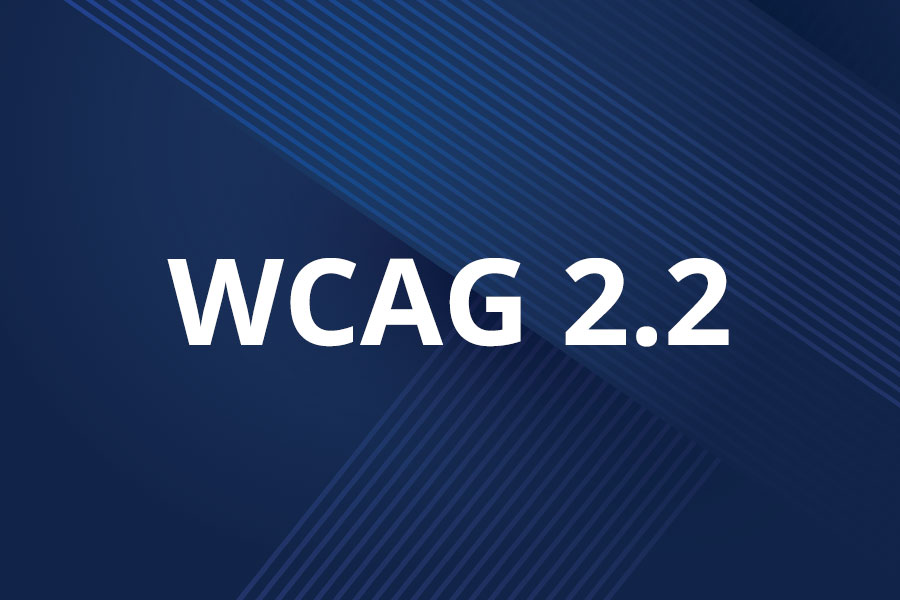
What’s New in 2.2?
The long anticipated WCAG 2.2 has finally arrived! On October 5, 2023, the World Wide Web Consortium (W3C) announced the official release of the new Web Content Accessibility Guidelines, WCAG 2.2.
WCAG 2.2 extends WCAG 2.1 by nine adding new success criteria to provide improved accessibility for digital content and applications.
The following success criteria are new in WCAG 2.2:
-
2.4.11 Focus Not Obscured (Minimum) (AA)
-
2.4.12 Focus Not Obscured (Enhanced) (AAA)
-
2.4.13 Focus Appearance (AAA)
-
2.5.7 Dragging Movements (AA)
-
2.5.8 Target Size (Minimum) (AA)
-
3.2.6 Consistent Help (A)
-
3.3.7 Redundant Entry (A)
-
3.3.8 Accessible Authentication (Minimum) (AA)
-
3.3.9 Accessible Authentication (Enhanced) (AAA)
Understanding the New Criteria
Many of the new criteria build on existing accessibility best practices like using visible keyboard focus and maintaining consistency across your user experience. It is recommended that you add these additional practices, especially the level A and AA criteria, to your accessibility development and testing process as soon as possible.
Focus
Criterion 2.4.11 through 2.4.14 deal with visible keyboard focus. Visible keyboard focus is used to indicate your place on the page when navigating a website from a keyboard, or other assistive technology using the keyboard API. The new criterion detail that keyboard focus should not be hidden by other elements on the page and make recommendations for the color contrast and size of the focus indicator.
Dragging Movements
Criteria 2.5.7 states that all dragging movements (click and drag with your mouse) must also be able to be achieved by another method. For example, if you have a list that can be reordered by drag-and-drop in your application, you should also add an alternative, such as number fields, so that the list could also be rearranged numerically from a keyboard.
Minimum Target Size
Criteria 2.5.8 defines the minimum click area size for target elements like buttons as 24 by 24 pixels. This will help to ensure that users with limited mobility have a large enough surface area to click the correct element.
Consistent Help
Criteria 3.2.6 builds on existing WCAG 2.1 criteria by further encouraging a consistent user experience. Help options such as contact information, contact forms, or chatbots should be placed in a consistent location on every page of the website. This makes finding help easier.
Redundant Entry
Criteria 3.3.7 deals with redundant entries of user-submitted information, such as a billing and shipping address in a form. Information that was previously submitted by a user should auto-populate or should be available for the user to select. This reduces unnecessary redundancy that may be very time consuming for some users.
Accessible Authentication
Criterion 3.3.8 and 3.3.9 provide guidance for authentication methods that require cognitive tests like remembering a password or solving a puzzle. AA and AAA level options are provided which give developers a choice of alternative authentication options such as allowing copy and paste to reduce password re-typing.